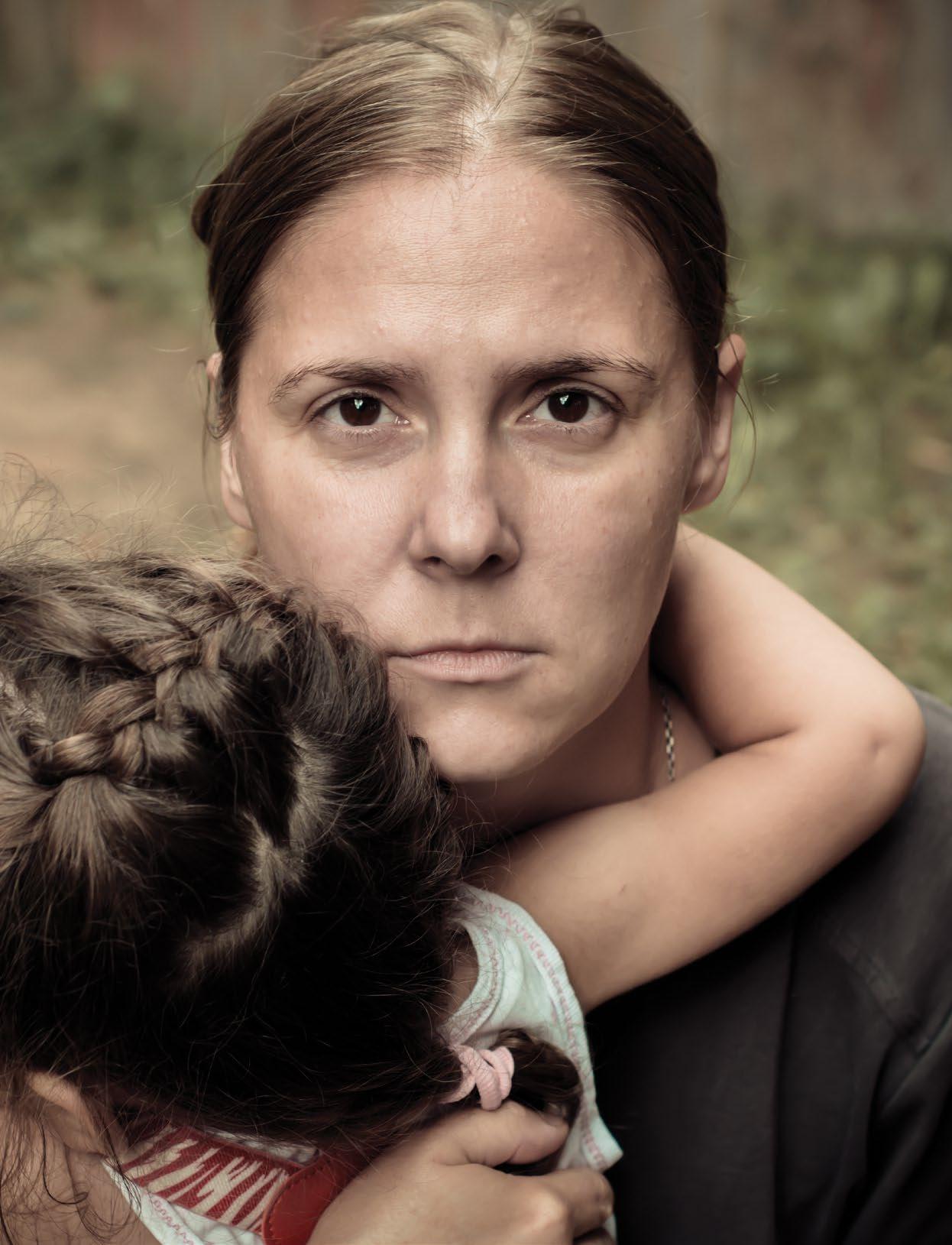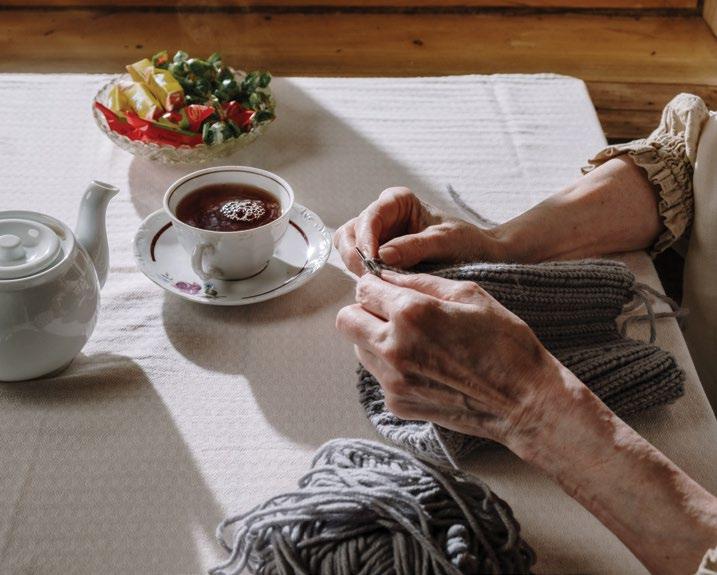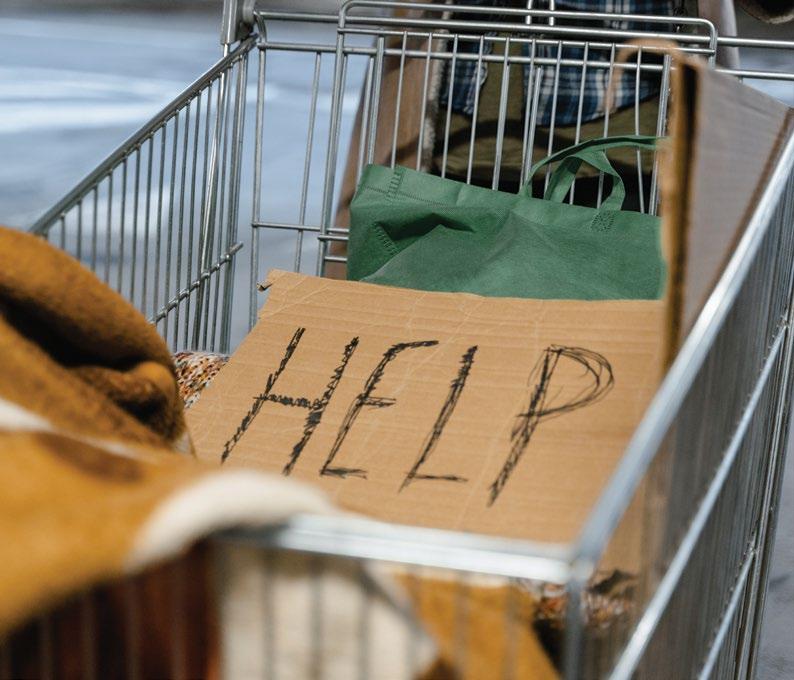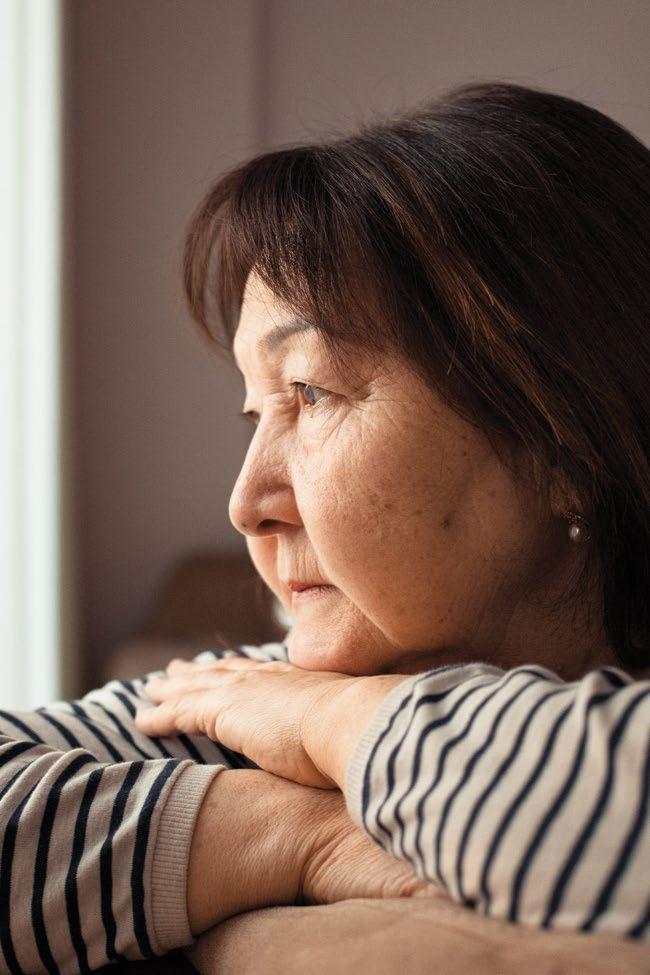
8 minute read
Creating homes for women at risk
WAYNE CHIRISA
Advertisement
WORDS Emma Macdonald
Having a roof over one’s head is a basic necessity— just one step up on the rung of humanity from having food to eat or clothes to wear.
And yet for an increasing number of Australians, this most basic necessity is out of reach as our political and community leaders struggle to keep vulnerable people off the streets and living in stable accommodation.
Statistics show women are increasingly vulnerable to poverty, and ultimately homelessness, in the ACT, Australia, and around the globe.
At Ginninderry, the vexed issue is getting fresh eyes through an innovative new trial—the Build-to-Rent-to-Buy (BtRtB) model—which seeks to target women at risk of homelessness, and support them to rent, and then buy, their own home. This model has potential national applications as a way to encourage more women who would otherwise be sidelined from financial and domestic stability to enjoy the security of a home to call their own.
Internationally, the World Economic Forum estimates at least 150 million people are without a roof over their head, which the United Nations has called a “violation of human dignity”. The last two years of the global pandemic have done much to bring an often under-recognised and under-reported crisis out into the open, although solutions are still difficult to access.
The most recent snapshot of homelessness (December 2021) by the Australian Institute of Health and Welfare, showed more than 1.4 million Australians were supported by Specialist Homelessness Services between 2011–12 and 2020–22. In 2020–21, almost 278,300 clients were assisted, equating to 1.1 per cent of the Australian population. Of those, 57 per cent were at risk of homelessness, while 43 per cent were actually experiencing homelessness. Of all those seeking assistance, six in 10 were women and one in every eight was a child.
Those known to be at particular risk of homelessness include those who have experienced family and domestic violence, children on care and protection orders, First Nations Australians, people leaving health or social care arrangements, and Australians aged 55 years or older. In Canberra, the ACT Council of Social Service has long been advocating for better ways to address the ACT’s homelessness issue, which is exacerbated by Canberra continuing to have the highest rate of rental stress for lower-income private renters of any Australian jurisdiction (73 per cent compared with 50 per cent nationally).
The most recent Productivity Commission report found more than 30 per cent of Canberra clients who approached homelessness services for accommodation did not have their needs met.

DR EMMA
The ACT Council of Social Service (ACTCOSS) CEO Dr Emma Campbell said the ACT had around 2000 people experiencing homelessness last year and services were feeling the strain. While she welcomed an $80 million investment in the last ACT Budget for maintenance of public housing, as well as $19 million for the Growing and Renewing Public Housing Program and $8.6 million for specialist homelessness services, she said the situation was frustrating.
“Aboriginal and/or Torres Strait Islander peoples, the LGBTIQA+ community, people with disabilities, young people and older women are all at an increased risk of housing insecurity and homelessness.”

Last year, the federal government issued the findings of a House of Representatives inquiry into homelessness which called for a 10-year strategy to tackle the problem. The Committee made 35 recommendations, including a stronger focus on prevention and early intervention, wider adoption of the “Housing First” principle—which would see housing made available to people who are homeless or at risk of homelessness as an immediate priority—and new approaches to increase investment in social and affordable housing.
Better coordination between the Commonwealth and territory governments is also required.
Chair of the Committee, Liberal MP Andrew Wallace said, “While the states and territories are responsible for housing and homelessness, a clear and consistent message to the Committee was that there is a need for a national approach. A national strategy would lead to better coordination, more accountability and a stronger focus on the policies that work—prevention and early intervention, providing housing as a priority, and encouraging more investment in social and affordable housing”. He noted, “There is no quick fix to end homelessness in Australia”.
Yet investment in the problem would also save the taxpayer over the longer terms as well as delivering fundamental dignity and safety to Australians falling through the housing safety net. KPMG modelling shows that for every $1 million of public investment in social housing, GDP was boosted by $1.3 million.

Both the social and economic cost of the issue is prompting innovative thought beyond government initiatives. In the United Kingdom, a project in Cambridge has seen homeless people given mini-modular homes to live in, costing $50,000, or the equivalent to the public spending on one person sleeping rough in the UK for one year.
Researchers also reported the project resulted in reduced drug and alcohol abuse alongside improved physical and mental health. “There is a huge sense of wellbeing tied to simply having your own front door,” anthropologist and Cambridge co-author Dr Johannes Lenhard said when the report was released at the end of last year.
The impacts of homelessness and housing stress consistently, disproportionately impact marginalised and disadvantaged people.
In India, cutting-edge 3D-printing technology is being used to produce low-cost homes which can be customised and erected in just five days with less waste generated than traditional building methods.
Tvasta Manufacturing Solutions is printing the homes, and with support from the Indian Government, is seeking to build up to 20 million homes for low-income families across India in the coming years.
Meanwhile, a company called 14Trees has set up operations in Malawi and Kenya in Africa where it is building 3D-printed houses in just 12 hours at a cost of less than $10,000 each. This process also reduces CO2 emissions by as much as 70 per cent compared with a typical house-building project.
Even the humble shipping container is now seen as a viable home. In 2020, as part of the Los Angeles government’s response to COVID-19, an entire apartment complex was erected using shipping containers stacked into three-storey structures. The Hilda L Solis Care First Village has 232 housing units and a common building with cooking, dining and laundry facilities. Closer to home, a Ginninderry trial hopes to provide well-made conventional homes for vulnerable women within the city’s most innovative and environmentally sustainable community.
Stretching from the north-western suburbs of Canberra (Strathnairn and Macnamara) across the ACT/NSW border into the Yass Valley, Ginninderry will eventually be home to approximately 11,500 homes and 30,000 people.
As part of its commitment to social equity, Ginninderry has signed a Memorandum of Understanding (MoU) with the National Housing Finance and Investment Corporation (NHFIC) and community housing provider Community Housing Canberra (CHC) to explore an innovative women’s housing initiative.
The MoU will enable the roll out of a BtRtB proof of concept model for at-risk and vulnerable women with four sites identified for up to 20 houses each.
While still in the planning and approvals stage for the first site, a mix of one, two and three-bedroom homes are being considered with priority given to vulnerable women. According to Ginninderry Joint Venture Project Director, Stephen Harding, “From the start, the Ginninderry Joint Venture has committed to creating environmental, economic and social benefits for the community, and this partnership is a great way to continue this commitment.”
The BtRtB model provides renters with the ability to transition to home ownership in a supported and affordable manner.
As a hypothetical example under BtRtB, a woman living in rental housing would pay affordable rent (at 74.9 per cent of market rent) to a Community Housing Provider (CHP) over a 10-year rental period. In that time, the woman could benefit from a savings plan created on her behalf. This, combined with NHFIC’s lower cost of financing and the CHP’s operational efficiencies, provides her with the opportunity to purchase her own home. At the end of the period, the woman has the option to buy the house, adjusting for her share in any capital growth, and also benefitting from the savings accumulated over 10 years.
Stephen said it is hoped the first site will be ready to commence construction next year.
“We are still progressing our proof of concept, and we want to crack the nut of producing something that both works and is replicable.
“As a Six Star Green Star community, part of our ethos is to be innovative, and we pride ourselves on delivering better outcomes to the community—part of that is inclusivity.”
NHFIC CEO Nathan Dal Bon said “With vulnerable women’s housing needs increasingly in focus, this initiative provides a great opportunity to explore affordable pathways to home ownership for at-risk women. We’re particularly excited that this bold initiative puts NHFIC at the forefront of housing finance innovation and could be leveraged more broadly to support vulnerable and at-risk women across Australia”.
Community Housing Canberra CEO Andrew Hannan was keen to see the project progress in an holistic way.

“Through this housing initiative we aim to provide women with low-butsecure employment incomes, often with little or no deposit, with access to a safe, secure and affordable home with a built-in pathway to home ownership. The bundling is the key difference, and we believe we can deliver a greater and potentially generational impact for these women and their families. We see new enquiries every day from women of all ages, and it’s fantastic to think that we can better address this massive unmet demand.”
ACTCOSS welcomed the trial with Dr Campbell noting that it was good to see the developer working with a Community Housing Provider who brought expertise on social and affordable housing to the table. “We really look forward to seeing the outcome on this and hope to see a significant investment in community housing alongside the delivery of more public housing to address our housing crisis.”









